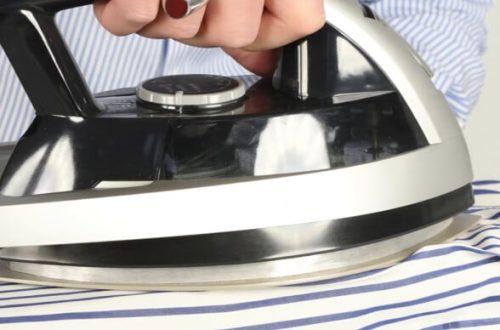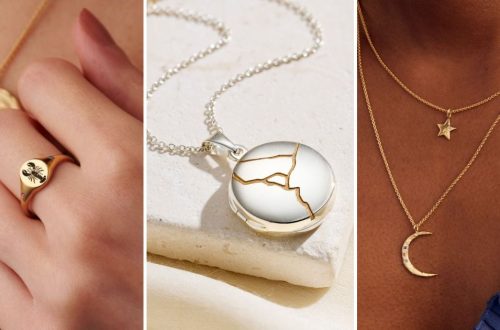Sunglasses are one of those accessories that just about everyone wears. More often than not, everyone owns at least a pair or two, as they can be used as protection from harsh UV rays, if you want to shield your eyes from the glare of the midday sun, or wear them as part of your daytime outfit.
We have already put together an extensive guide about sunglasses, the styles, materials, and more, but one of the most common problems is “I can never find a pair that looks good on me” or “How can I tell which pair works best?” Today, we put together a guide that helps you narrow down the styles that work well for you so you can find the best sunglasses for your face shape, skin tone, and hair color.

Identifying Your Face Shape & The Sunglasses For You
A fundamental step in determining what pair of sunglasses suits you is identifying your individual face shape. In fact, it pays to be familiar with what type of face you possess not only for this reason as it can play a part in identifying potential hairstyles, facial hairstyles, and even hat styles that might be best suited for you.
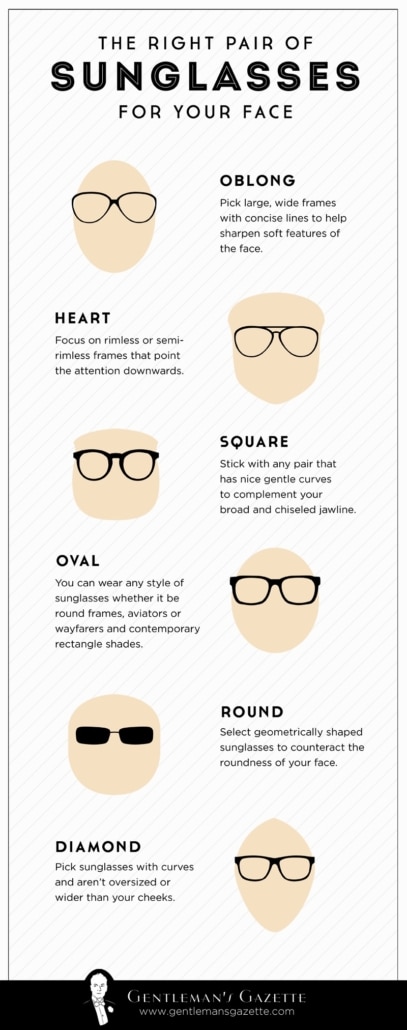
The six types of faces are square, round, oblong, heart-shaped, diamond, and oval. To figure out what shape you are, you’ll need more than just a mirror. You’ll need a tape measure, a pencil, paper, and someone to help you.
- Beginning at your forehead, measure across it at the widest point. Write that number down.
- Then, measure the widest length across your cheekbones. Again, write it down.
- Moving lower to the jaw, measure your jawline at its widest point. You guessed it: write it down.
- Next, measure the length of your face by placing the measuring tape at the top of your forehead at the hairline and measuring it down to the bottom of your chin. Write it down.
Regardless of your numbers, your face is going to fit into one of the following six categories of face shapes. To determine which shape your face is, use the measurements and check the following shapes.
Oblong
You may have heard the phrase “having a long face” used to describe you before, and having an oblong face shape means that it’s meant to be taken quite literally. Oblong faces are longer than they are wide. For the most part, the measurements of the jawline, cheeks, and forehead will be very similar. If your measurements fit this, chances are you have an oblong-shaped face.
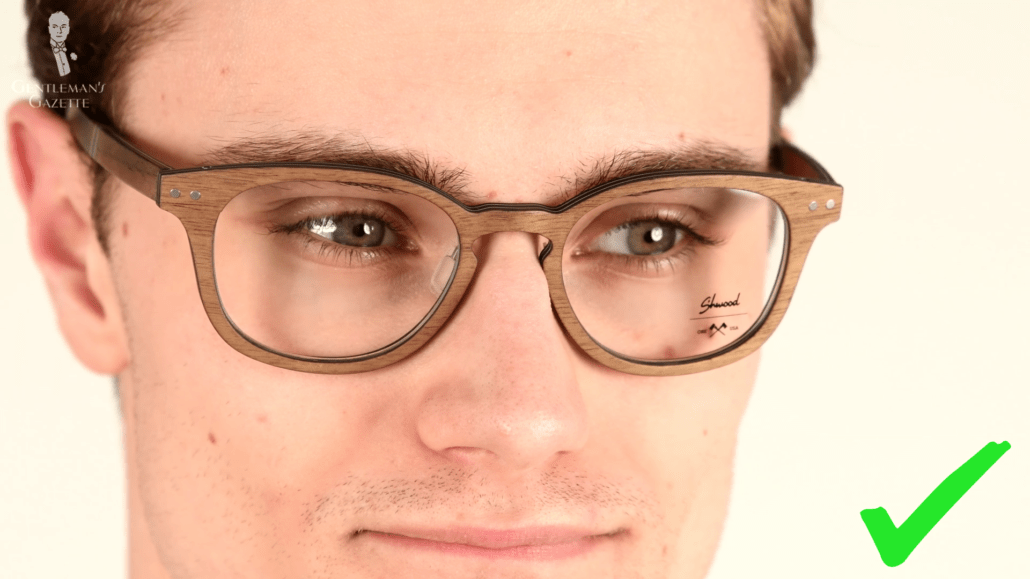
This is not to be confused with the oval face shape, wherein you would have a wider forehead and rounder chin. The oblong face shape is built for oversized frames. Your best bet is going to be larger frames with some thickness to them. Sharp angles and concise lines will help to sharpen your soft facial features, giving you a more masculine look.
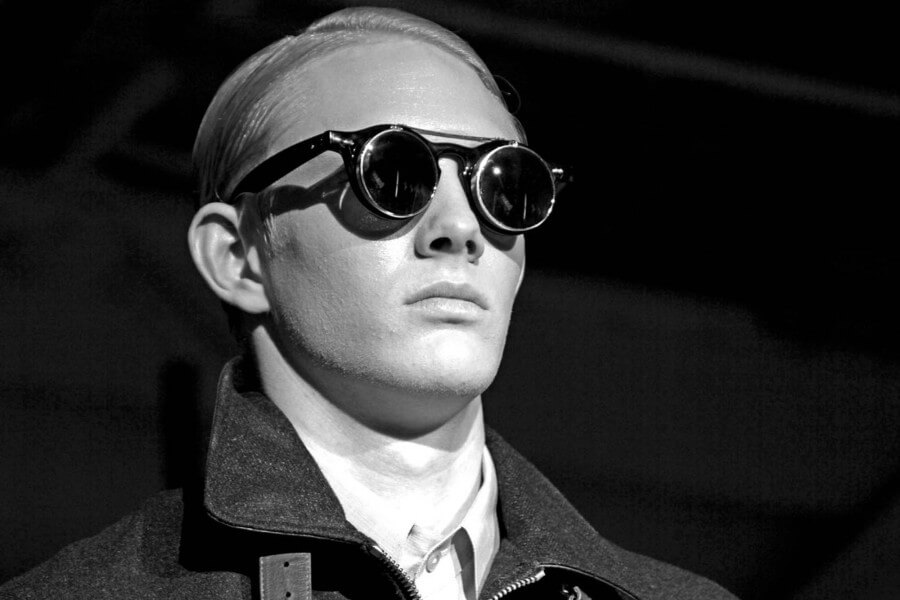
Look to ever-popular sunglasses styles, such as aviators and wayfarers, as well as wraparounds and rectangles, for a start. But as long as the frames aren’t small, you should be just fine.
Heart
Defined broadly by a wider forehead and cheeks, a slender jawline, and a narrowed and pointed chin, the heart’s face shape is an inverted triangle, slightly longer than it is wide at the cheeks by about an inch or so. It is closely similar—and often confused for—the round face shape due to having similar outlines. Look to the tapered chin of this particular shape for their distinctions.

A Heart Shaped Face Is Like
An Inverted Triangle
Since you’ve probably been told how beautiful your eyes are time and time again, that’s a great indicator that you have a heart-shaped face.
[Image Credit: British GQ]
Round and oval frames will serve to balance your tapered and asymmetrical features. Wire-framed and semi-rimless sunglasses such as aviators and Clubmasters achieve the same while keeping you looking light and minimizing the width of your forehead and cheekbones. If you do want a certain amount of thickness to the frame, focus on finding ones that point the attention downwards. Just make sure they’re not too embellished.
The Clubmaster Sunglasses Primer
Square
Square-shaped faces are pretty equal in length and width. The cheek and length measurements will be similar, with just an inch or two difference. Also, the other measurements will all be similar, and the edges of your face will be almost straight up and down. You’ll notice concise, sharp corners rather than rounded edges at the jaw.
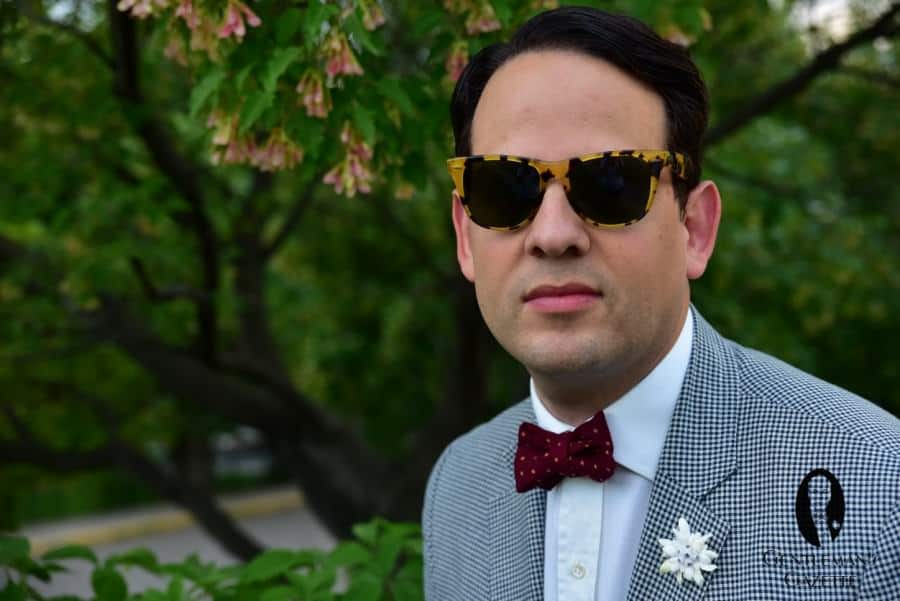
Much like the previous entry, look at rounder and rimless sunglasses styles that’ll contrast and compliment your broad jawline and chiseled features. These particular styles will provide a balance to your uniform and often angular face shape. Meanwhile, semi-rimless glasses might serve to introduce a sense of asymmetry and interest. Overall, it is best to stick with any pair that has nice, gentle curves to compliment your masculine appearance.
Oval
Often referred to as “egg-shaped,” oval faces are longer than they are wide, with a slightly wider forehead and shorter jawline. Usually, the chin is slightly rounded. And while being “egg-headed” isn’t something most would rejoice in being, we’re here to tell you having an oval-shaped face is, in fact, a cause for celebration, being one of the most versatile shapes, meaning you can wear almost any style of sunglasses with ease.

Take inspiration from
Don Draper
More than any other style of sunglasses though, the contemporary rectangle-shaped frame, being sharp and wider than they are long, is the exact antithesis of an oval-shaped face. This makes it the perfect frame to balance and refine your soft, round features. This goes just as well for square-framed glasses.
Aside from these, look as well to the ever-trusty aviators and even wayfarers for added boldness to your look. But, again, with a face like this, the world is your oyster.
Aviator Sunglasses – Looking to the Skies Since 1936
Round
As wide as they are long, the difference between a rounded face and a square is that a round face has a smaller forehead with a small rounded jawline. The forehead will be smaller than the cheek measurement, and there won’t be any sharp lines of the jaw but rather a gentle curvature.

Like how a round frame compliments a square face, the opposite is true for round-shaped faces. You will find that many of the frames that compliment an oval-shaped face will also compliment faces of this category. So, again, selecting frames that are rectangular, horizontal, or even wayfarers are going to be your best bet since they’ll give your face a longer, more oval appearance.
Wayfarer Sunglasses Guide
Diamond
Characterized by high and wide cheekbones, a tapered and pointed chin, and a narrow forehead, people with a diamond-shaped face will want to focus on complimenting that first feature most of all.
To do this, you’ll want to counteract your sharp, angular features with rounder sunglass frames. Additionally, styles such as aviators and semi-rimless glasses like Clubmasters do well to draw the eye downward to balance the prominence of your cheekbones.
Need more clarity on measuring your face and finding your face shape? Check out this video!
Choosing the Right Color
Similarly to how your sunglasses’ frame shape should complement your face shape, the color of your sunglasses’ frame exemplifies features such as hair color and skin tone.
Skin Tone
Besides the natural skin tone, there are two other categories: warm skin tones and cool skin tones.
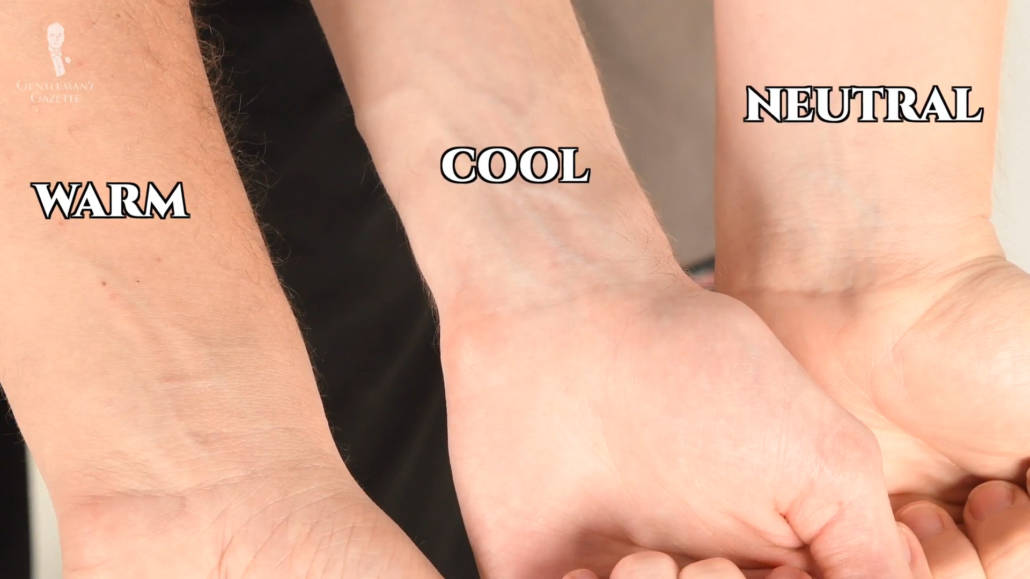
Light Skin Tones
For light skin with warm undertones, your forearm is going to be a light peach with greenish-yellow undertones. If you fit into this category, try warmer neutral colors like bourbon brown and burgundy or saturated colors like jewel-toned purple or warm gold.
If you have light skin with cool undertones, your skin will be light pink with blue undertones. Lighter pastel colors, as well as ivory, silver, and gray, will work well for you. Avoid anything bright, especially saturated colors around the warmer end of the spectrum, but feel free to try blues and pinks for a more whimsical look.


Medium Skin Tones
If you have medium-colored skin with warm undertones, you’ll notice you have yellow and green undertones. Ambers and rich browns all work well with your skin tone—anything bright with an orange hue, even gold and tortoiseshell. Even green will flatter you.

If you have medium skin with cool undertones, you’ll have pink and blue undertones on your forearm. Tropical colors like blues and greens work well, but you can also get away with dark, bluish reds closer to magenta or as far as a deep purple. You can even go for a cool shade of black.
Dark Skin Tones
If you have darker skin with warm yellow undertones, consider metal frames, darker browns, cognacs, ambers, and tortoiseshells—again, colors within the red and orange spectrum. They’ll all work well with your skin tone.

Look your best with
Dark Sunglasses
If you have dark skin with cool blue undertones, you can also stick with cooler colors like blues, but your best bet is going to be the darkest shades of black, deep browns, and gunmetal. For more variety in color here, you may wish to venture into darker shades of cool greens and purples.
Hair Color
Hair naturally ranges from bright blondes to the darkest of blacks with a full spectrum of browns in between—even reds and grays. Much like your skin, hair color may also vary between cool and warm tones.
Blonde Hair
Lighter-colored hair will, in general, benefit from darker-colored frames to contrast and compliment their bright features. Cool-toned blondes may benefit from sunglass frames in cool blacks, darker grays, and navy while avoiding anything warm and saturated. Meanwhile, their warmer counterparts should look to rich browns, such as amber and mahogany, as well as deep greens and peach. Either undertone, however, will find themselves looking good in a tortoiseshell frame.

Black Hair
From one end of the spectrum to the other, black is unique in that its neutrality often leads to versatility. Any color works here. You could choose to double down your dark features with a set of black, dark gray, or navy frames or opt for boldness through contrast with a brightly-colored frame or perhaps a bright, neutral color.
The best advice on what to avoid here is anything that clashes with or washes out your skin tone.
Brown Hair
Moving on from the extremes, “brown” is a broad term, and what best suits you will obviously depend on which end of the spectrum you lean toward. But as a general rule, cooler-toned brown-haired gentlemen will want to lean on green, blue, purple, pink, and silver sunglasses frames, and warmer tones will lean to reds, oranges, yellows, browns, and golds. When in doubt, however, tortoiseshell is a safe bet wherever you fall in this broad category.
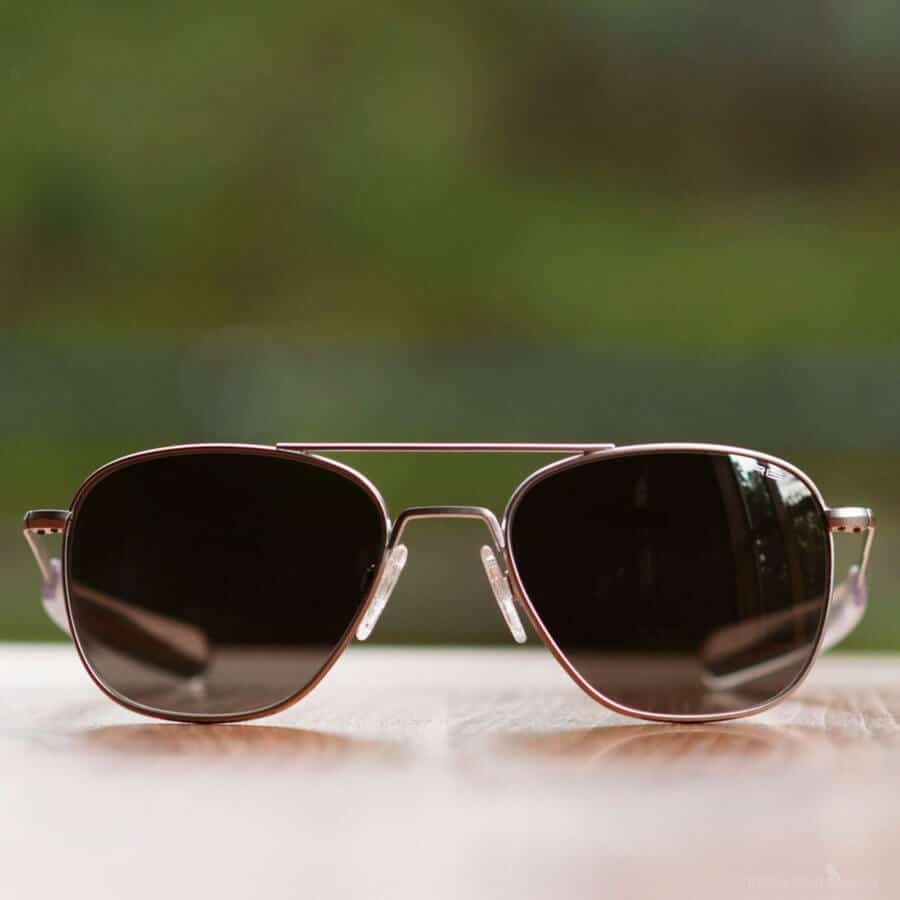

Red Hair
For redheads or brown-haired gentlemen who fall closer to that hue than others, there is an obvious answer: green. But, if you’re looking for something less bold, lean on the fiery warmth of your crown and opt for reddish browns like burgundy or mahogany. For metals, go for gold or copper, and never forget that tortoiseshell is always a safe choice.
Gray Hair

BenefiT from your hair’s
Neutrality
Much like black hair, those who have chosen to embrace gray hair can enjoy a variety of options. The neutrality of gray allows you the opportunity to enjoy bolder colors with much less fear of color clashing or go for the elegant contrast of black frames. Even for metals, almost any hue will fit your hair.
Does The Color of the Lenses Matter?
Thus far, we’ve focused exclusively on the shape and color of your sunglasses’ frame. But, unlike eyeglasses, which are typically untinted, sunglasses are. Then, the question arises: Does lens color matter? Yes, they do.
More than aesthetic, the tint of your lenses actually has a practical and technical purpose to them as well. Seeing as you’ll be seeing the world through your lenses, their tint affects how light will be filtered through your eyes.
Gray or Black
As the general use tint, black is mainly good for blocking out excess light and reducing fatigue. Its neutrality provides true and natural color perception as well. In terms of style, they’re an easy go-to, able to work in any frame color and any skin tone.
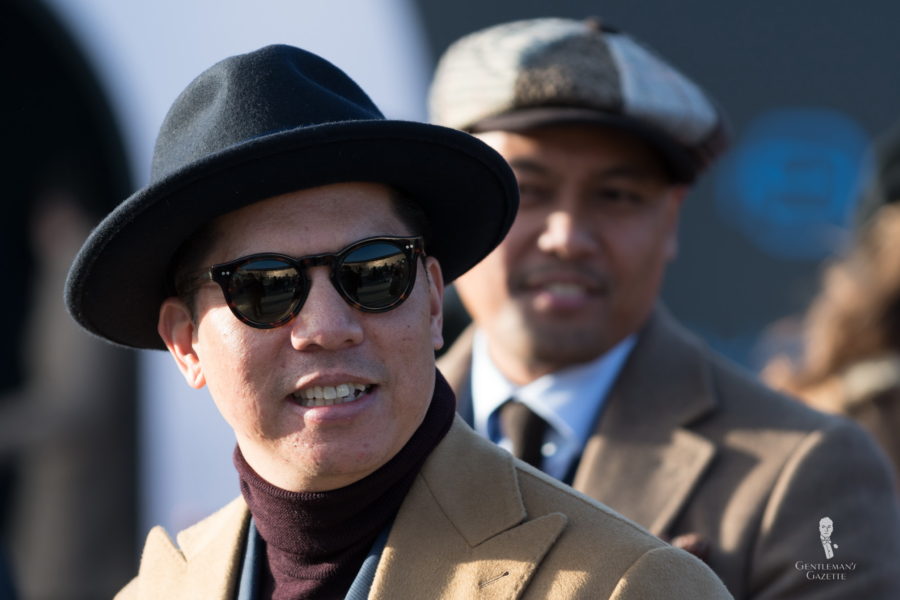
Blue and Green
Green-tinted lenses are known to be a popular choice for outdoor activities for their ability to reduce glare without compromising visibility. They also have the added benefit of blocking blue light, which adds to eye fatigue. Meanwhile, blue is known to improve perception during low-visibility situations such as snow or haze.


On the matter of style, either color will look excellent on people with cool undertones.
Amber, Brown, and Yellow
Much like gray and black tints, both amber and brown are versatile choices as they block out excess light and improve contrast in a milder way than either gray or black.

Slightly block out the sun with
Warm colored sunglasses
Brown and amber are popular choices for water-adjacent activities. Yellow, on the other hand, aids in visibility in low-light settings.
All three are, in fact, the best at blocking blue light. These colors are best for people with warm undertones, complementing them, especially under the sun.
Bonus Tip: Consider Your Lifestyle, Too!
As much as we are advocates for classic style, we also advocate having the right tools for the job. Much like any article of clothing you wear, you must first and foremost consider your lifestyle and what you’ll be doing in them. After all, just as you’ll never hear us suggest that you wear swimwear to a gala, you’ll never hear us telling you to wear a Black Tie ensemble to the beach.
So, when choosing what types of sunglasses you’ll be getting, consider what you’ll be using them for, how long you’ll be wearing them during the day, and also consider what it is you live in. We talked about the practical uses of the different lens tints in the previous section, which will certainly be part of it as well.

If you’ll be spending most of your day outside under a sunny sky, you’ll need sunglasses that offer good UV protection. Wraparounds are perfect for this as their shape naturally protects your eyes from the environment, especially when paired with dark-tinted, polarized lenses. Their design means that they’ll be snuggly fit around your eyes as you go about your day.
If you’re at the beach, consider amber-tinted sunglasses with not a wraparound frame but simpler, wider like aviators or wayfarers. They also provide good UV protection but are easy enough to pull on and off when getting in and out of the water.

When doing more extreme outdoor activities like biking, cycling, or skiing, you’ll benefit from mirrored lenses since they reflect light and glare away from your eyes, allowing you to see better.

Conclusion
Knowing your face shape, skin tone, and even hair color, is key to great sunglasses. For more information, be sure to check out our sunglasses guide, which lists recommended brands and talks about sunglasses in far greater detail.
What face shape are you, and what style of frames do you find work best? Does your favorite pair complement your skin tone? Let us know in the comments!
FAQ
Does your face shape matter when choosing sunglasses?
Certain face shapes benefit from the shape of the sunglasses in ways that complement and highlight one’s features. For instance, a round face shape would look great with geometric frames to balance out the roundness.
Why should you consider your skin tone?
Understanding your skin tone when buying sunglasses allows you to narrow down your options to frame and lens colors that look good on you and do not wash out against your skin.
Should your hair color affect your sunglass choice?
While there isn’t an iron-clad rule, some hair colors look good with complementary frame colors. Men with blonde hair would look great with dark glasses for a nice contrast, for example.
Do mirrored lenses look good?
More than style, mirrored lenses are also functional for outdoor activities like skiing or cycling, as they reflect light and glare away from the eyes, allowing better vision and safety.



